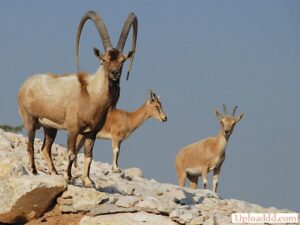 🏔️ Kirthar in Crisis, Ibex in Triumph: The Battle for Sindh’s Wild Heart
🏔️ Kirthar in Crisis, Ibex in Triumph: The Battle for Sindh’s Wild Heart
Once Hunted, Now Hopeful—The Sindh Ibex Reclaims Its Mountains
Perched on sun-scorched cliffs, with hooves balanced against ancient rock, the Sindh ibex has staged a miraculous comeback. Only a generation ago, fewer than 2,000 of these regal wild goats survived in the Kirthar Mountains. Today, their numbers have soared past 20,000—a living testament to what relentless conservation, community vigilance, and sheer resilience can achieve.
But even as this vulnerable species reclaims its ancestral home, a darker contest unfolds below the ridges: a struggle between fragile ecosystems and the machinery of unchecked extraction.
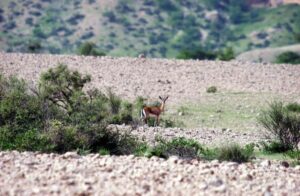 The Wild Goat’s Return: A Decade of Unseen Heroism
The Wild Goat’s Return: A Decade of Unseen Heroism
“Over 10,000 ibex have been added to the population of Kirthar National Park in just 10 years,” says Wali Mohammad Birahmani, the park’s tireless conservator. His voice is a blend of pride and warning. The success was neither sudden nor easy—it was earned through years of quiet heroism by local tribes who turned their backs on hunting traditions and chose to stand as stewards of their land.
It wasn’t always so. In the 1970s and 80s, poaching by powerful chieftains and well-heeled guests from the Gulf states decimated the ibex. The silence of the cliffs was broken by rifle cracks. Caravans came for trophies; the goats disappeared.
Then came a blanket ban, a slow building of trust, and a hard-won realization: if the ibex vanished, so would a piece of Sindh’s soul.
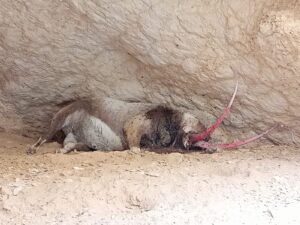 Kirthar National Park: A Wilderness Under Siege
Kirthar National Park: A Wilderness Under Siege
Kirthar is no ordinary park. Sprawling across 308,733 hectares, it is Sindh’s last great wilderness—a domain of urial, chinkara gazelles, leopards, and at least 58 bird species. It is the watershed of the Hub River, the liquid lifeline of Karachi. And it is one of the very few places on Earth where the Sindh ibex can still thrive.
Yet, this sanctuary stands at the edge of a precipice.
In a bewildering contradiction, more than 90% of Kirthar has been handed over as the Dumbar Block—an oil and gas exploration concession. From the outset, this project has unfolded like a cautionary tale in bureaucratic overreach:
- Laws that explicitly ban mining and drilling in national parks ignored.
- Environmental assessments quietly fast-tracked before even completing baseline studies.
- Local communities and conservationists shut out of decisions that could scar these mountains forever.
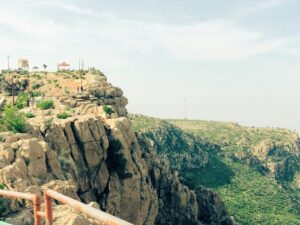 The Unfolding Conflict: Oil, Gas, and the Question of Who Decides
The Unfolding Conflict: Oil, Gas, and the Question of Who Decides
In 1999, a joint venture between Premier Exploration and Shell pressed forward with seismic surveys in Kirthar. Public outrage forced a promise: no environmental impact assessment (EIA) would proceed without a full baseline study and open consultation.
That promise has been broken.
While local communities awaited the results of the study, the EIA process was resumed in secret, turning transparency into farce. A Project Steering Committee meant to oversee the study was never even formed. And even as public pledges were still warm, drilling plans advanced, sowing distrust.
Environmentalists warn that this is not just about a single park. If Kirthar falls, it sets a precedent for the exploitation of every protected area in Sindh.
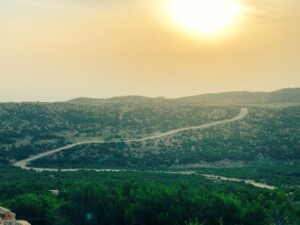 Beyond the Mountains: New Frontiers for Protection
Beyond the Mountains: New Frontiers for Protection
Yet there is a countercurrent of hope. The Sindh government is considering declaring Karoonjhar and Takkar in Khairpur as new national parks. Rich in biodiversity and ancient heritage, these landscapes could become a beacon of sustainable development—if the mistakes of Kirthar are not repeated.
 Why This Matters to Every Citizen of Sindh
Why This Matters to Every Citizen of Sindh
This is not an abstract battle between oil rigs and ibex. The health of Kirthar’s ecosystems sustains the Hub River—the water that flows into your taps in Karachi. The vegetation stabilizes soil and slows desertification. The park is a living barrier against climate extremes.
When we lose protected land to short-term greed, we gamble away our children’s inheritance.
A Call to Action: Reclaiming Our Environmental Future
The story of the Sindh ibex shows that recovery is possible. With courage, communities can reverse decades of damage. But the unfinished struggle over Kirthar reminds us that conservation must never be taken for granted.
Every citizen has a stake in this decision. Will we allow our last wild places to be traded behind closed doors—or will we stand up for transparency, protection, and the right to a living, breathing Sindh?
🌿 Be Part of the Story
🟢 Raise Your Voice—Demand that the full baseline study results be released and the Project Steering Committee convened.
🟢 Support Local Communities—They are the frontline defenders of Kirthar’s biodiversity.
🟢 Stay Informed—Follow SindhClimate for updates, investigations, and calls to action.
